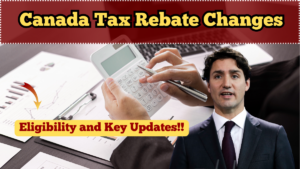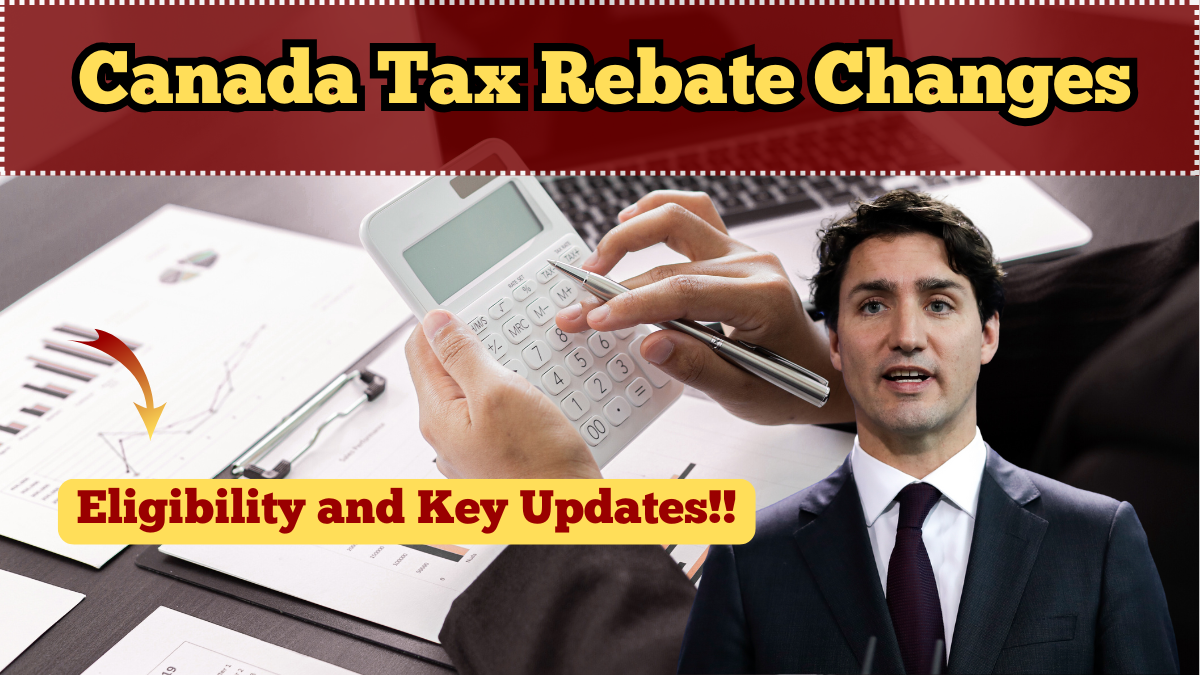As the 2025 tax season kicks off, millions of Canadians are preparing to file their returns—but this year comes with major updates. The federal government has revised several tax rebate programs to increase affordability, boost household income, and streamline refund delivery. Whether you’re a salaried worker, self-employed, senior, or student, it’s important to understand the new rules and how they affect your eligibility.
The Canada tax rebate system includes a range of refundable credits, overpayments, and benefit programs. These changes are part of a broader national plan announced under the finance news banner in early 2025 to address inflation, reduce poverty, and improve transparency in tax processes.
Here’s a detailed breakdown of all 2025 updates related to rebates, refund timelines, and who stands to benefit.

What’s New in Canada’s Tax Rebate System in 2025
The Canada Revenue Agency (CRA) has confirmed several enhancements to federal rebate policies in 2025, particularly to better support low- and middle-income families, gig workers, and seniors. These updates also reflect a shift toward more automated processing and real-time income verification.
Key 2025 tax rebate changes include:
-
Increased Canada Workers Benefit (CWB) advance payment limit from $1,200 to $1,500 annually
-
Introduction of a new Digital Services Tax Rebate for freelancers and self-employed Canadians
-
Earlier tax refund issuance for individuals filing returns digitally by March 31
-
New income thresholds for GST/HST credit eligibility
-
Direct deposit rebates for climate action incentives in all provinces
These 2025 updates are already in effect and will be reflected in all 2024 tax year filings completed in early 2025.
Key Federal Tax Rebates You Should Know
Canada offers a variety of tax rebates, and the 2025 enhancements expand several of them. Here are the top programs to watch this year:
1. Canada Workers Benefit (CWB)
-
Refundable credit for low-income workers
-
Maximum payout for singles increased to $1,518
-
Couples can receive up to $2,616
-
Advance payments now issued quarterly instead of annually
2. GST/HST Credit
-
Available to individuals and families with low or modest income
-
Updated income limit for eligibility: $52,000 for families and $42,000 for individuals
-
Quarterly payments continue, with 2025 adjusted amounts ranging from $260 to $1,200 per year
3. Climate Action Incentive Payment (CAIP)
-
Rebates issued automatically for residents in provinces with federal carbon pricing (e.g., Alberta, Saskatchewan, Ontario)
-
New direct deposit system ensures faster payments
-
Payment ranges from $280 to $680 per adult, depending on province and family size
4. Disability Tax Credit (DTC) Refund Adjustment
-
Improved processing time and refund accuracy in 2025
-
Individuals with DTC certification receive additional tax refunds of $2,000–$2,800 annually, depending on eligibility
These programs are adjusted annually based on inflation and income trends reported in the latest finance news updates.
Who Is Eligible for Rebates in 2025?
Rebate eligibility varies based on your income, residency status, age, and filing status. With 2025 enhancements, more Canadians are expected to qualify automatically.
You are likely eligible if you:
-
Earned less than $60,000 in 2024
-
Filed your 2024 taxes by April 30, 2025
-
Have one or more dependents
-
Are a senior (aged 65+) or receiving CPP/OAS
-
Worked as a self-employed or gig economy worker (e.g., rideshare, online services)
-
Are a resident of a province eligible for federal climate rebates
The CRA’s online portal now provides a real-time eligibility check for most rebates based on your 2024 income return.
How to Claim Your Tax Rebate in 2025
Claiming your Canada tax rebate in 2025 has never been easier thanks to the fully digitized CRA platform. Here are the steps to ensure your refund is processed quickly and accurately:
Step-by-step guide:
-
File your tax return before April 30, 2025 (or June 15 if self-employed)
-
Use NETFILE-certified tax software like TurboTax, Wealthsimple, or H&R Block
-
Choose direct deposit for faster payment
-
Ensure your bank details and CRA MyAccount are up to date
-
Apply for optional credits like the DTC or CAIP if not auto-enrolled
Early filers (by March 31) are expected to receive refunds within 8 to 10 business days, while paper filers may wait up to 6–8 weeks.
Timely filing also ensures you do not miss out on quarterly advance payments for CWB and other key rebates.
FAQs
What are the biggest tax rebate changes in Canada for 2025?
The Canada Workers Benefit now offers more money and is paid quarterly. New rebates for digital workers and updated GST/HST credit limits are also included.
When will I get my 2025 tax rebate?
If you file electronically and choose direct deposit, you could receive your refund within 10 business days. Paper filings take longer.
Do I need to apply separately for each rebate?
No. Most rebates are automatically assessed based on your tax return. However, you must claim the Disability Tax Credit or register for the CRA’s MyAccount to view them.
Are self-employed workers eligible for rebates?
Yes. Gig economy and freelance workers are now eligible for new digital services rebates and the expanded CWB.
How do I check if I’m getting a rebate?
Log in to your CRA MyAccount and check the “Benefits and Credits” section to see upcoming or pending payments.
Click here to know more.
Aanchal is a passionate writer with a keen interest in storytelling, content creation, and creative expression. She enjoys exploring diverse topics and crafting engaging narratives that captivate readers.




